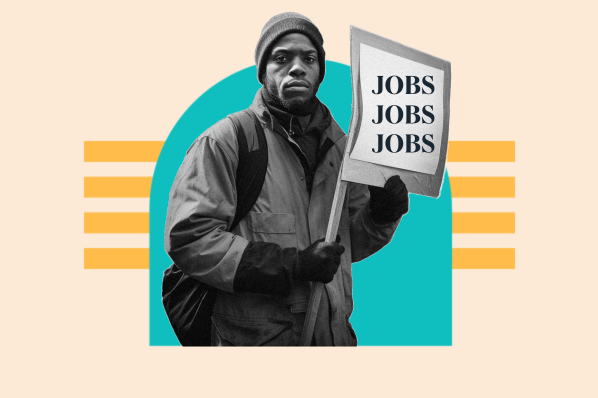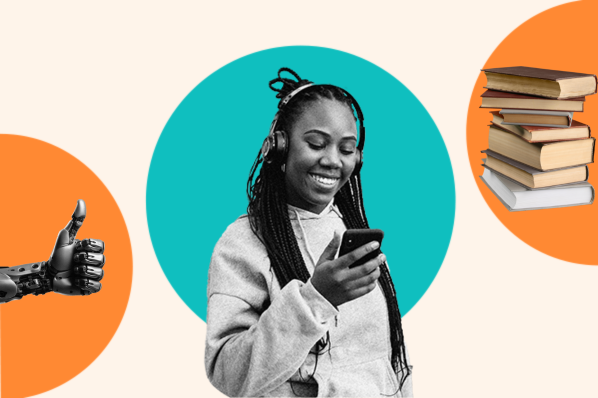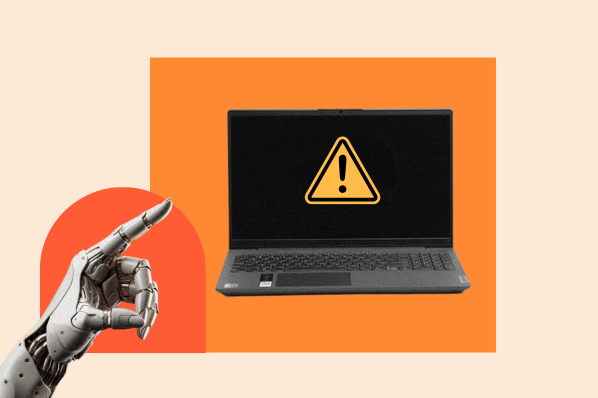In the late 1500s, Queen Elizabeth I denied a patent for the first knitting machine.

“I have too much love for my poor people who obtain their bread by the employment of knitting,” she explained, “to give my money to forward an invention that will tend to their ruin by depriving them of employment and thus making them beggars.”
Flash forward a few hundred years, and the automation of textile factories led to protests, the smashing of machines, and the coining of the term Luddite.
Today, knitting is no longer a job-creation powerhouse nor a political powderkeg. But as we enter our own era of automation, it’s nice to be reminded that everything old is new again.
So, will the Queen’s concerns ring true once more? Will AI tend to our ruin? Are labor unions poised to be the new Luddites? Or is there a future where AI works for everyone?
How AI Impacts Labor
Unlike knitting machines, which have a fairly niche use, there are few industries that AI can’t touch. Its ability to analyze data or create customized content at scale in mere seconds makes these tools unlike any tech revolution that’s come before. Suddenly, AI appears in everything from accounting to zookeeping.
In fact, around 80% of US workers could have at least 10% of their tasks impacted by LLMs, according to a study by the University of Pennsylvania and OpenAI. (And it’s worth pointing out that LLMs are just one type of AI in the new pantheon driving the AI boom. That 80% figure isn’t even counting tasks that can be done by audio, video, or imaging tools.)
The question is no longer, “Will AI impact my job?” but “How will AI impact my job?”
And the uncertainty around that question, coupled with the rapid growth of these tools, has led to some predictable fears:
- Will AI replace my job?
- Will AI be used to micromanage or intrusively monitor my job?
- Will AI be used to kill labor rights?
To see how realistic those fears are, let’s explore how real-world examples play out as we speak.
Will AI replace jobs?
The career firm Challenger, Gray & Christmas claimed in their May ‘23 report that AI had already contributed to nearly 4,000 job losses across the US.
Still, try searching for real examples of mass-scale AI job replacement, and you’re going to see a lot of “would,” “could,” and “may.”
The only panic-scale example you’ll likely find comes from the India-based startup Dukaan. In July, the company’s founder, Suumit Shah, made international headlines by laying off 90% of their customer support team in favor of a chatbot.
On the flip side, AI is also being used to fill jobs. In one ray of sunshine, the HR services company Humanly reported that job acceptance rates by women increased by 8% when recruiters were paired with an AI tool that promotes active listening.
Will AI micromanage or monitor jobs?
Perhaps a more realistic – or at least more immediate – fear is the ever-watchful eye of Big Brother. (What company already came to mind, and why is it Amazon?)
As far back as 2019, before the current AI boom, it was widely reported that Amazon had been using AI to track and report on employees’ behavior. At the time, The Verge had obtained documents that showed that workers whose “time off task” was deemed by an algorithm to be too high could be placed on a training plan or even fired.
However, Amazon is hardly alone, as recent research by Top10VPN found that demand for employee surveillance software is 49% higher on average in 2023 than in 2019. This is a worrying trend, as many of these programs confuse screen time for productivity.
A less invasive approach would be to use AI to provide aggregate insights into employee behavior. For example, Microsoft’s new productivity software, Viva Insights, can show a manager the average percentage of time their team spends in long meetings.
According to Microsoft, an individual’s data is only used to deliver reminders to take breaks or to wind down for the end of the day.
However, that exact line of thinking was Barclays' defense when it was revealed they’d been using spyware to track employees’ computer activity.
The London-based bank insisted the data had been anonymized and was used solely to monitor productivity and well-being. However, in 2020, a whistleblower revealed that Barclays had allowed managers to view the data for individual workers.
The bank has since removed the software following public backlash.
Will AI be used against unions?
2020 was a good year for fans of leaked memos when yet another document introduced the world to a technology called the geoSPatial Operating Console, or SPOC.
Not to be confused with a pointy-eared alien, this SPOC is a sophisticated piece of software deployed by Amazon to analyze data sets about trends that impact their operations. These trends include things like weather, crime, and safety incidents.
However, the internal memo showed that SPOC was boldly going where no AI had gone before, with data sets bearing titles like “Union grant money flow patterns,” “Presence of local union chapters and alt-labor groups,” and “The union relationship map.”
How Labor Impacts AI
Given the examples above, it’s understandable that AI is a hot topic at negotiating tables across a wide range of industries. From auto workers to actors, from pilots to port workers, unions are discussing ways to protect their members from the risks of AI.
But at this point, it’s too late to demand that AI simply goes away.
“The genie is out of the bottle and it’s not going back in. Writers can’t write it back in either, but they can stop thinking about AI as an active enemy machine [...],” says Dr. Ruari Elkington, the senior creative industries lecturer at Queensland University of Technology.
Dr. Elkington was speaking of the recent Writers Guild of America (WGA) strike, but the comment could apply to workers in most industries. And those workers would be wise to pay attention to the WGA strike, whose recent victory may offer a model for approaching AI in the workplace.
Under the terms of their new contract, WGA members can choose to use AI if both parties consent but cannot be required to use AI when writing. The agreement also includes provisions to prevent AI from being used to undermine pay and workplace rights.
But the conversation isn’t just about protecting workers from AI, as some labor unions are now using AI to protect workers.
Take, for example, the new app WeClock, which describes itself as “a self-tracking app to fight wage theft and foster worker wellbeing.”
The app gives workers access to data typically reserved for the large corporations that employ them.
It can track data points like:
- How much you move vs. stay still.
- How much time you spend using work apps.
- The time and distance spent commuting.
- The temperature, loudness, and darkness of your work environment.
By allowing workers to track their own data, the company hopes to empower workers to discuss “the presence or absence of decent work, fair work, working conditions, or work/life balance.”
Knitting Together a Future
As quickly as AI products have been adopted, it's notable how few examples of our darkest fears exist so far. If AI is going to tend to our ruin, it’s not able to do so just yet.
That said, AI is undeniably changing the face of work, and ignoring it would be a mistake.
“The attitude that we think everybody should have to succeed in AI, [...] I call it the ‘paranoid optimist,’” says Kipp Bodnar, CMO for HubSpot, during a recent taping of the Marketing Against the Grain podcast. “Which means, fundamentally: ‘I think good things are going to happen. I think AI is good for the world. I think it’s going to help my business, but I need to be paranoid enough to know that it’s all not butterflies and rainbows. There are things that could go wrong.”
His counterpart, Kieran Flanagan, CMO of Zapier, adds, “You could say ‘Wow, this is going to be really disruptive to my job’ [or] you can look at it and say “Wow, this is going to be really disruptive to my job and it gives me an opportunity to gain leverage against everyone else. And I think that is the attitude you want to take going into this kind of AI revolution.”
For what it’s worth, by the end of the 19th century, there were four times as many weavers employed in factories as there were knitters before automation.











